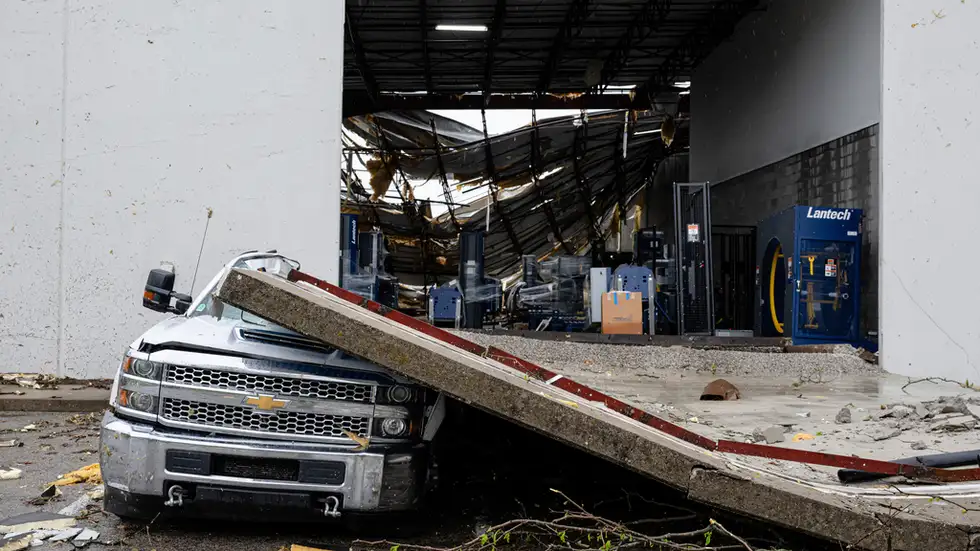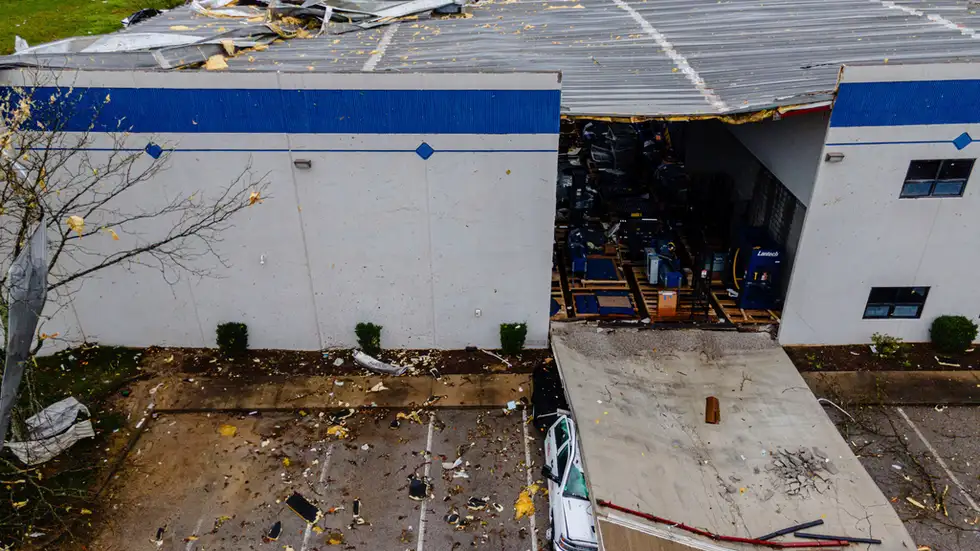Catastrophic Tornado Outbreak and Generational Flooding Devastate Southern and Great Lakes Regions

Unfolding Crisis: Tornadoes and Flooding Trigger Emergencies Across Multiple States
A relentless tornado outbreak coupled with life-threatening flooding has left a trail of destruction from the South to the Great Lakes, claiming lives, destroying communities, and crippling infrastructure. Authorities warn of escalating threats as severe weather continues, with potential EF3+ tornadoes, massive hail, and catastrophic flooding overwhelming rescue efforts.
Key Impacts and Casualties
- Fatalities and Injuries: At least four deaths have been confirmed, including a 27-year-old Indiana man killed by downed power lines and two fatalities in Tennessee. Over a dozen injuries are reported, with numbers expected to rise.
- Infrastructure Damage: Tornadoes have flattened homes, collapsed warehouses, and left neighborhoods unrecognizable. In Brownsburg, Indiana, a warehouse roof collapse trapped workers, while Lake City, Arkansas, saw “total destruction” of residential areas.
- Historic Flooding: Nashville recorded an “April’s worth” of rain (3–5 inches) in 12 hours, triggering flash flood emergencies. Rescuers are navigating submerged streets, with water levels reaching home doorways.
Power Outages Cripple Recovery Efforts
Over 200,000 homes and businesses are without power across three states:
- Michigan: 114,855 outages (partly lingering from a weekend ice storm).
- Indiana: 71,190 outages.
- Ohio: 36,912 outages.
Officials caution that outages could persist as storms delay repair operations.
Tornado Threats and Supercell Risks
The National Weather Service (NWS) issued 208 tornado warnings on Wednesday—the third-highest for April since 1986. Today’s greatest tornado risk spans:
- ArkLaTex to Western Tennessee: Supercells may produce damaging hail and tornadoes, particularly south of a stalled front.
- Confirmed Tornadoes: Over 30 reports since Tuesday, with damage surveys ongoing. Indiana, Kentucky, and Arkansas face preliminary assessments for EF3+ tornadoes.
Flash Flood Emergencies: A “Generational” Threat
The NWS warns of “catastrophic, potentially historic flooding” with rainfall totals exceeding 10–15 inches in some regions. Key terms to know:
- Flash Flood Emergency: The highest urgency alert, signaling imminent danger to life/property. Active in Tennessee, Kentucky, and Arkansas.
- Generational Flooding: A rare event occurring once every 20–30 years, capable of overwhelming infrastructure and reshaping communities.
Rescue Operations and Community Response

- Nashville: Fire crews conduct water rescues as streets transform into rivers.
- Tennessee: Highway Patrol teams search debris for survivors amid ongoing storms.
- School Closures: McCracken County, Arkansas, canceled classes due to power outages and road damage.
Historical Context: Echoes of the 1974 Super Outbreak
Today’s storms coincide with the 51st anniversary of the 1974 Super Outbreak, which spawned 148 tornadoes and claimed 335 lives. Modern advancements like Doppler radar and timely warnings have improved safety, but the current outbreak underscores lingering vulnerabilities.
Safety Measures and Resources

- Immediate Actions: Avoid flooded roads, heed evacuation orders, and shelter in windowless interiors during tornado warnings.
- Stay Informed: Track NWS updates via weather.gov or trusted apps.
- Emergency Kits: Prepare water, non-perishables, flashlights, and medical supplies.
Ongoing Coverage: Follow real-time updates on tornado warnings, river levels, and road closures as meteorologists monitor this evolving multi-state disaster.
